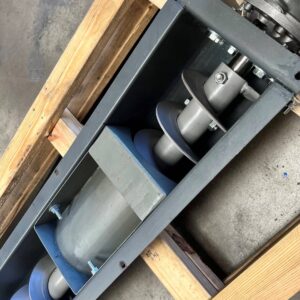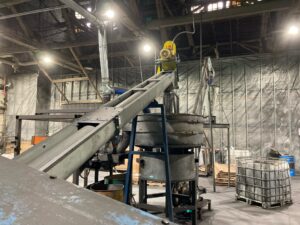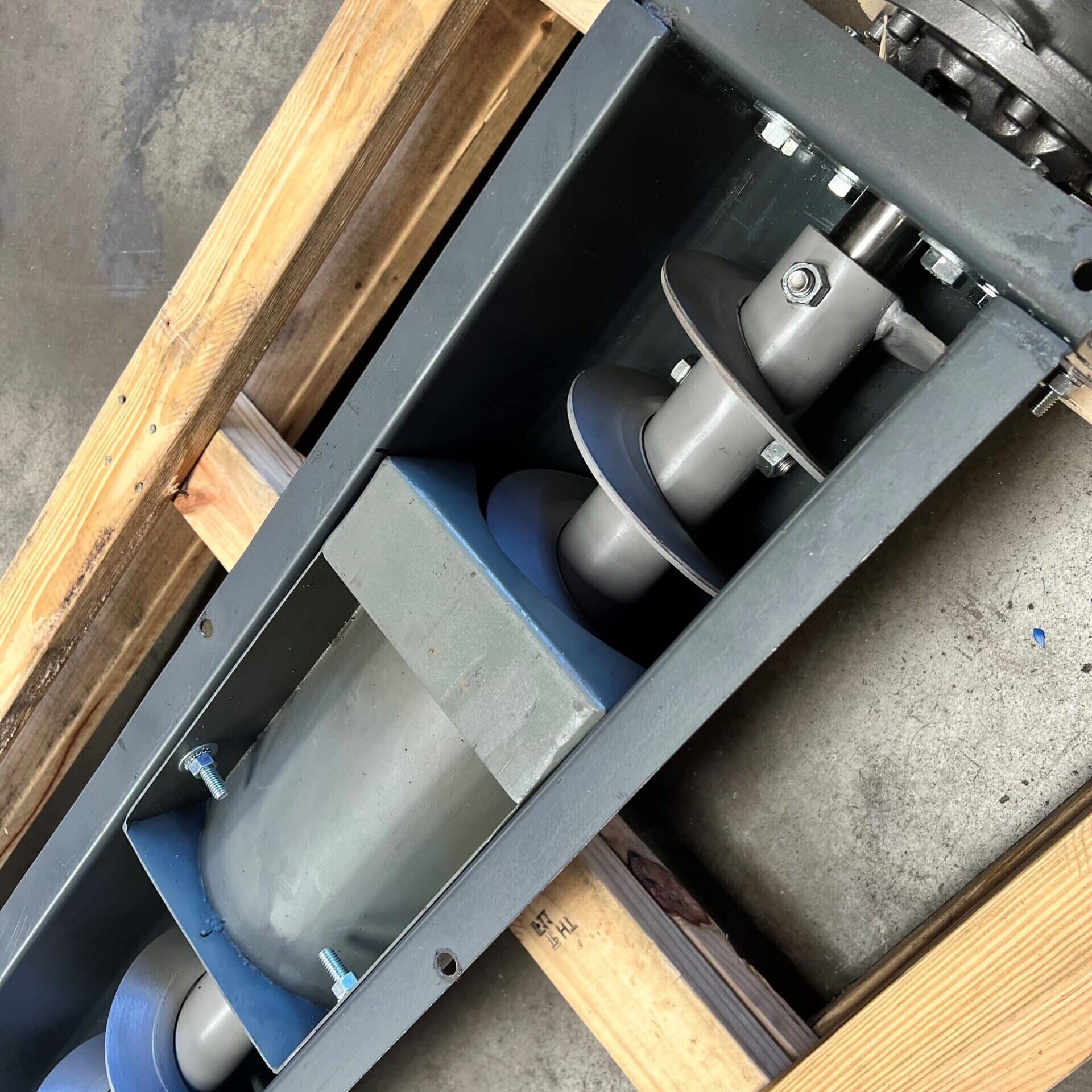
Since screw conveyors are so versatile, they are used in many different applications, configurations, and purposes. Many of these uses require special modifications to effectively operate. Both screw feeders and incline screw conveyors use shrouds but in different ways. A screw conveyor shroud is a formed metal piece used to encapsulate the screw in a U-trough. The shroud is used to cut off flow at a flooded inlet and to prevent back flow on steep inclines. Again, the modularity of screw conveyors allows for shrouds to be fitted into any standard screw conveyor U-trough and can also be used in flared and rectangular troughs.

The first use for a shroud is in a screw feeder to cut off flow at the flooded inlet of a U-trough. The feeder shroud turns the open U shape into a round shape. The feeder shroud is only 2x screw diameter long. With a flooded inlet and a U-shape the material would flow past and above the screw in the open area of the trough and make precise metering of the flow impossible. In addition, many products would simply flood and fill the entire trough leading to clogs and stalls. The feeder shroud limits flow to what the screw feeds through the shroud allowing for precise and predictable flow without the risk of flooding the entire trough with material.
The second use of a shroud is for steep inclines greater than 20 degrees. Like with the feeder, the shroud encapsulates the screw, turning the open U shape into a round shape. The shroud runs the full length of the screw. For steep inclines the material can fall back over the top of the flights rendering the screw conveyor ineffective. The shroud prevents this fall back and allows for efficient and effect conveyance.


